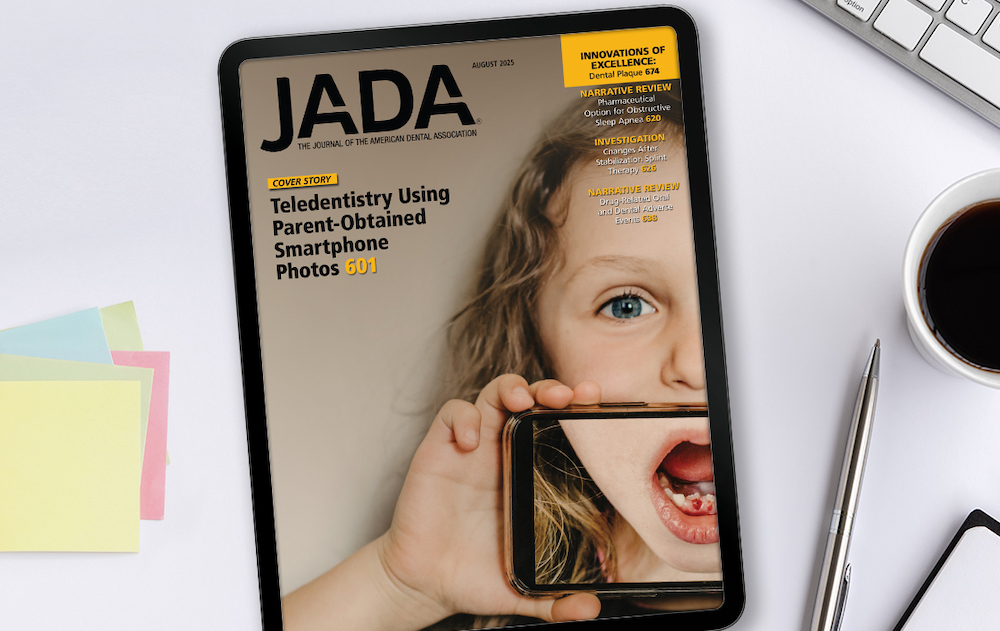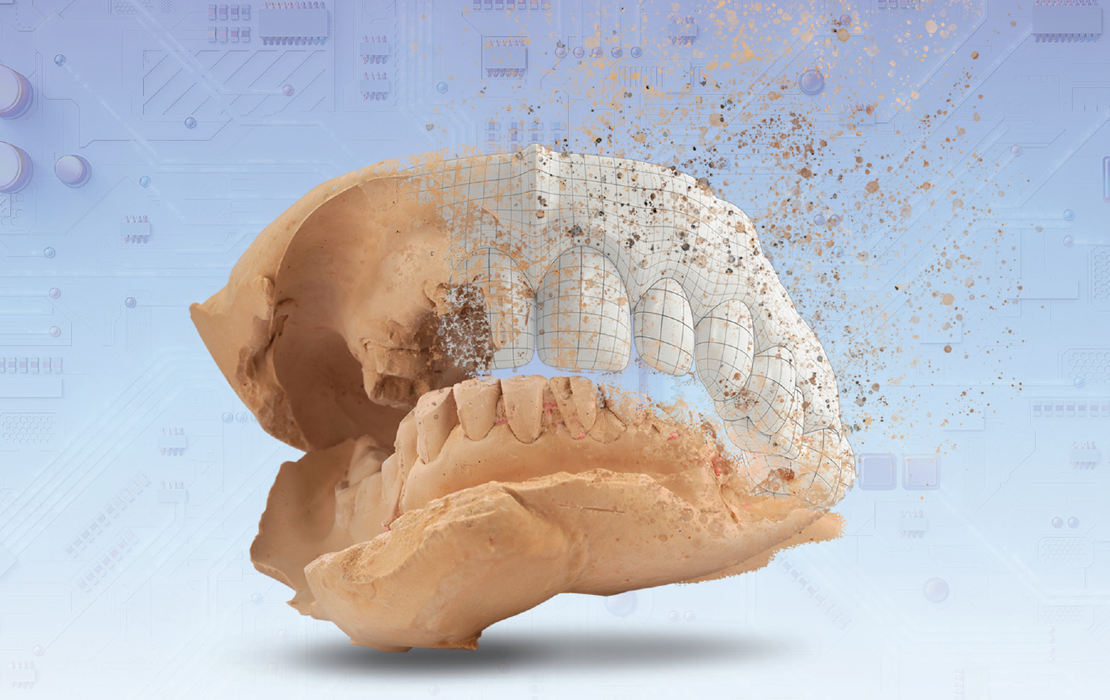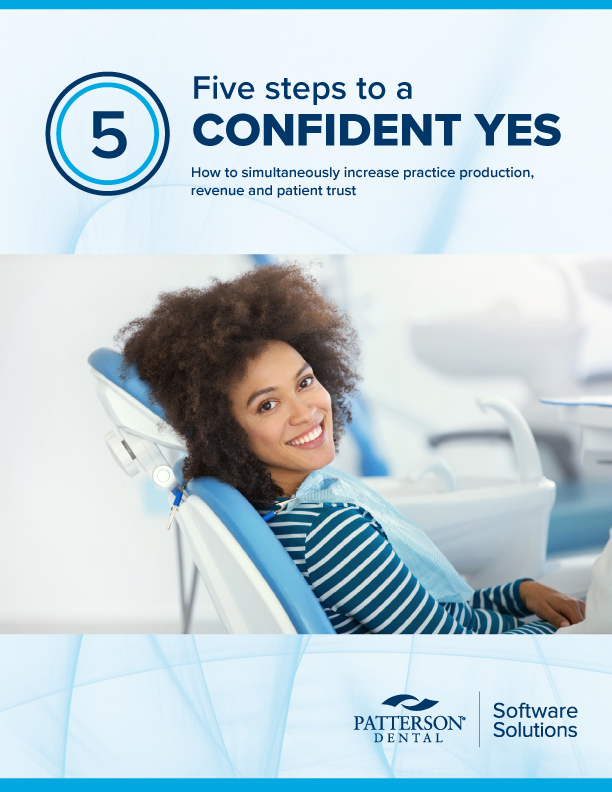August JADA finds dentists can use parents’ photos to detect caries in children
Other articles discuss obstructive sleep apnea, drug-related adverse events

Dentists can use parent-obtained smartphone photos to accurately assess visible caries in children, according to a study published in the August issue of The Journal of the American Dental Association.
The cover story, “Diagnostic Accuracy of Detecting Caries and Other Intraoral Findings Using Parent-Obtained Smartphone Photographs in Teledentistry,” compared dentists’ findings from the photos submitted for teledentistry consultations with other dentists’ findings from point-of-care clinical examinations. Parents followed a guide to take the photos.
The 138 patients included in the study were children with high caries prevalence, with 70% in primary dentition and 30% in mixed dentition. The photos showed occlusal or frontal views.
For each photographic view, the study authors calculated specificity, meaning the ability to correctly exclude patients who do not have caries, and sensitivity, meaning the probability of accurately identifying those who do have caries. All views had high specificity for detecting caries, ranging from 97.1% to 100%.
Except for the mandibular anterior dentition, which had a sensitivity of 67.2%, when all views were combined, the maxillary occlusal and frontal images together showed high sensitivity of 94.8% to 99.1% in detecting caries in the primary dentition.
Similar trends were observed for the mixed dentition. Combined photos had an accuracy of 94.1% to 100%.
“Further research is needed to study the accuracy of these photographs for detecting intraoral soft-tissue findings, demineralization, and cavitated caries lesions in lower-risk children,” the authors said in the study. “However, our study results point to the usefulness of parent-obtained smartphone photographs for detecting caries in children.”
Other articles in the August issue of JADA discuss a pharmaceutical option for obstructive sleep apnea, changes after stabilization splint therapy, and drug-related oral and dental adverse events.
Every month, JADA articles are published online at JADA.ADA.org. ADA members can access JADA content with their ADA username and password.



